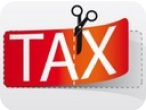Aug 15, 2024
Retail Spending Surges: What It Means for the Economy
BusinessRetail Spending Surges: What It Means for the Economy
The latest retail spending figures have shown a significant surge, marking a positive trend for the economy. Though the recovery has been uneven across various sectors, this rise in consumer spending is a beacon of optimism for businesses and economic analysts alike. But what does this uptick in retail activity mean for the broader economic landscape? In this blog post, well break down the implications.
The Surge in Retail Spending: Key Drivers
The substantial increase in retail spending is driven by several interlinked factors:
- Pent-Up Demand: After prolonged periods of limited spending due to the pandemic, consumers are eager to spend on goods and services they had put off.
- Economic Stimulus: Government stimulus checks have put extra cash into consumers hands, encouraging spending.
- Improved Employment Rates: As job security improves, consumers feel more confident in their financial stability and spend more freely.
- Ease of Restrictions: With COVID-19 restrictions easing, more brick-and-mortar stores are open, leading to an increase in physical retail purchases.
- Consumer Confidence: Increased consumer confidence is perhaps the most crucial factor driving the current spending spree.
Impact on Different Sectors
The surge in retail spending is not uniform across all sectors:
- Technology and Electronics: This sector continues to thrive as consumers invest in home offices, smart gadgets, and more.
- Apparel and Accessories: Clothing stores have seen a significant boost as consumers refresh their wardrobes post-lockdown.
- Automotive: Car sales have surged, influenced by both necessity and the sheer ability to spend.
- Luxury Items: Surprisingly, high-end markets are seeing increased spending as affluent consumers unleash their accumulated savings.
- Food and Beverage: Restaurants and cafes are witnessing higher foot traffic, as diners feel more comfortable patronizing these establishments.
Broader Economic Implications
The rise in consumer spending doesnt just impact retail sectors. Its ripple effects are felt throughout the broader economy:
- Increased Production: To meet rising demand, companies ramp up production, which often leads to more hiring and economic activity.
- Employment Growth: Retail stores, shipping companies, and manufacturers benefit from increased sales, leading to job creation.
- Supply Chain Dynamics: Increased demand pressures supply chains, which can lead to temporary shortages and price adjustments.
- Inflation Concerns: While a moderate increase in spending is beneficial, too rapid a rise can stoke inflationary pressures.
- Economic Growth: Ultimately, robust retail spending is a crucial driver of GDP growth.
What Businesses Should Watch For
Businesses need to stay vigilant as well. Here are key factors to monitor:
- Consumer Trends: Keeping an eye on changing consumer preferences can help businesses stay ahead of the curve.
- Supply Chain Management: Efficient supply chain strategies will be vital in meeting consumer demand without delays.
- Price Sensitivity: Businesses need to be cautious about price hikes to avoid deterring cash-strapped consumers.
- Technological Integration: Incorporating advanced technologies can help improve customer experience and operational efficiency.
- Sustainability Initiatives: Increasingly, consumers prefer brands that are committed to sustainability and ethical practices.
The Road Ahead: Challenges and Opportunities
The surge in retail spending presents a mixed bag of opportunities and challenges:
- Opportunities for Growth: Retailers can leverage the current consumer optimism to expand their product lines, improve customer experiences, and capture market share.
- Investment in Technology: With consumers increasingly shopping online, investments in e-commerce and digital marketing can yield significant returns.
- Focus on Sustainability: Brands that can align their operations with sustainable practices are likely to attract a growing base of environmentally conscious consumers.
- Challenges of Inflation: One of the biggest risks is that rising demand could lead to inflation, eroding consumer purchasing power.
- Supply Chain Disruptions: Maintaining a resilient and flexible supply chain will be critical to navigating potential disruptions and shortages.
Conclusion
The current surge in retail spending is a positive sign for the economy, reflecting both pent-up demand and government stimulus. While naturally, there are challenges, particularly concerning inflation and supply chain disruptions, the opportunities for growth and innovation are immense. Businesses that focus on consumer trends, integrate advanced technologies, and prioritize sustainability are likely to thrive in this dynamic environment.
Need to save on taxes and reduce your financial burden? Set up a call with our expert team today to discover how we can help. Book Your Free Consultation Here.
Stay connected
Schedule a free consultation to discuss your goals with an expert
Discover our Podcast
Our expert guests provide valuable insights, tips, and advice, as well as engaging stories and thought-provoking discussions that will leave you with a newfound appreciation and understanding of business.



Join our Community
Discover useful tax saving strategies and advice from experts and fellow members. Our FREE community resources and support help you boost your tax savings, allowing you to retain more of your hard earned money for your family.